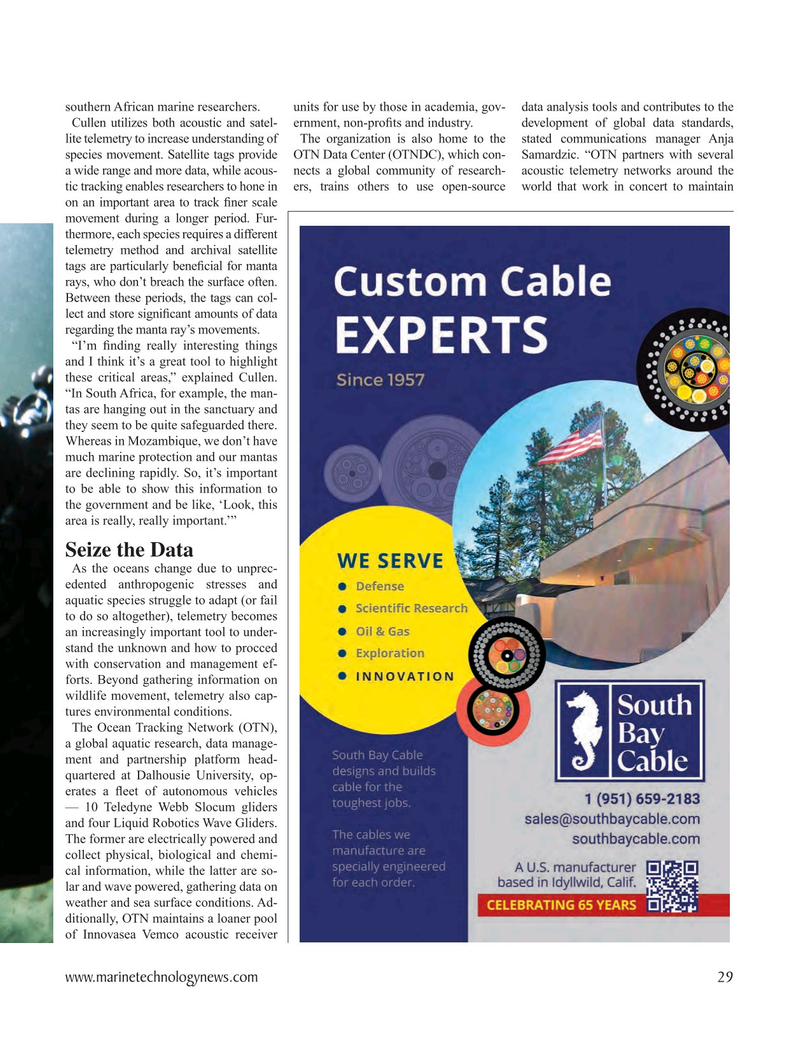
Page 29: of Marine Technology Magazine (May 2023)
Read this page in Pdf, Flash or Html5 edition of May 2023 Marine Technology Magazine
southern African marine researchers. units for use by those in academia, gov- data analysis tools and contributes to the
Cullen utilizes both acoustic and satel- ernment, non-pro? ts and industry. development of global data standards, lite telemetry to increase understanding of The organization is also home to the stated communications manager Anja species movement. Satellite tags provide OTN Data Center (OTNDC), which con- Samardzic. “OTN partners with several a wide range and more data, while acous- nects a global community of research- acoustic telemetry networks around the tic tracking enables researchers to hone in ers, trains others to use open-source world that work in concert to maintain on an important area to track ? ner scale movement during a longer period. Fur- thermore, each species requires a different telemetry method and archival satellite tags are particularly bene? cial for manta rays, who don’t breach the surface often.
Between these periods, the tags can col- lect and store signi? cant amounts of data regarding the manta ray’s movements. “I’m ? nding really interesting things and I think it’s a great tool to highlight these critical areas,” explained Cullen. “In South Africa, for example, the man- tas are hanging out in the sanctuary and they seem to be quite safeguarded there.
Whereas in Mozambique, we don’t have much marine protection and our mantas are declining rapidly. So, it’s important to be able to show this information to the government and be like, ‘Look, this area is really, really important.’”
Seize the Data
As the oceans change due to unprec- edented anthropogenic stresses and aquatic species struggle to adapt (or fail to do so altogether), telemetry becomes an increasingly important tool to under- stand the unknown and how to procced with conservation and management ef- forts. Beyond gathering information on wildlife movement, telemetry also cap- tures environmental conditions.
The Ocean Tracking Network (OTN), a global aquatic research, data manage- ment and partnership platform head- quartered at Dalhousie University, op- erates a ? eet of autonomous vehicles — 10 Teledyne Webb Slocum gliders and four Liquid Robotics Wave Gliders.
The former are electrically powered and collect physical, biological and chemi- cal information, while the latter are so- lar and wave powered, gathering data on weather and sea surface conditions. Ad- ditionally, OTN maintains a loaner pool of Innovasea Vemco acoustic receiver www.marinetechnologynews.com 29
MTR #4 (18-33).indd 29 5/31/2023 4:01:00 PM

 28
28

 30
30
